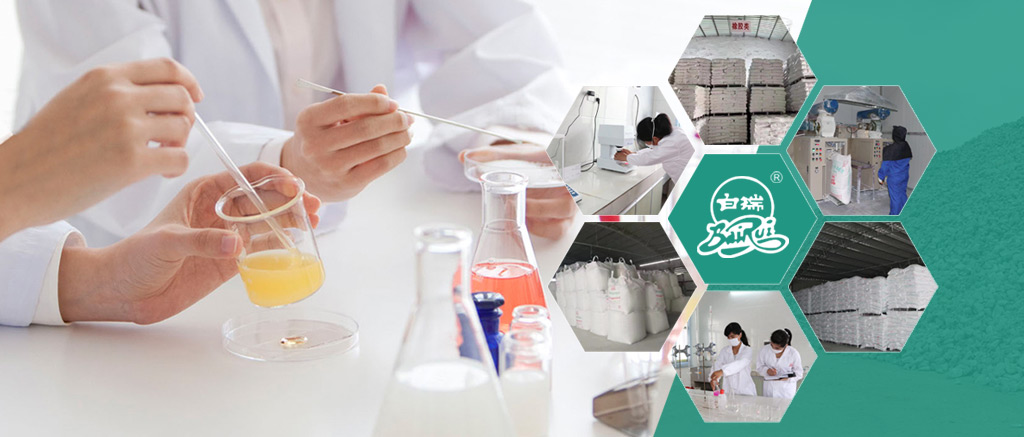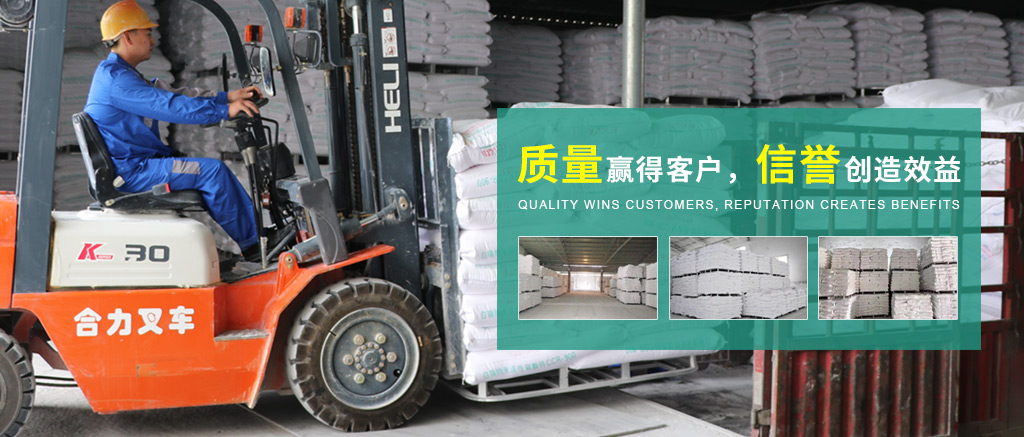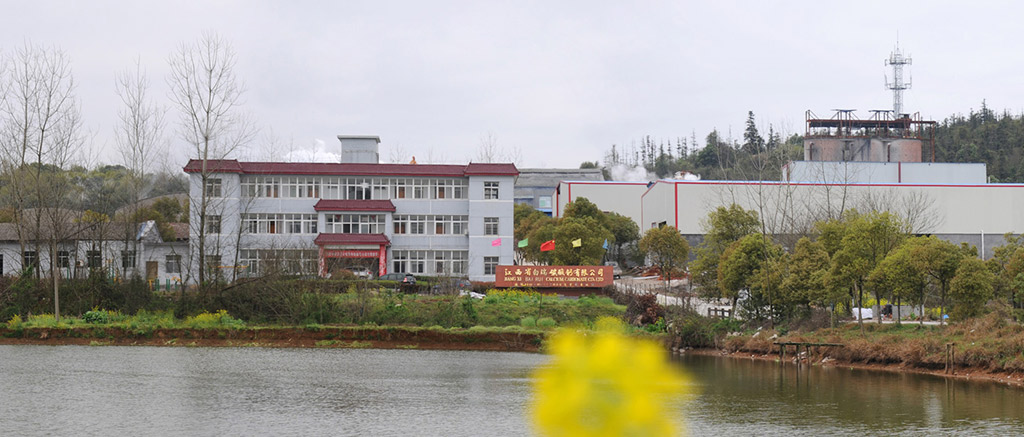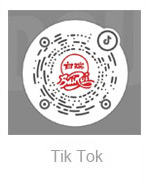Application characteristics and development trend of calcium carbonate in coatings
Time: 2018-11-29
Calcium carbonate is the most widely used physical pigment in paint, which plays a role in filling the skeleton and substrate in paint film, and improves the performance of paint. In the putty powder, 70-80% is heavy calcium; In thick paint, the amount of calcium carbonate is generally more than 30%; In water-based coatings, the amount of calcium carbonate is 20-60%; In the finish paint, calcium carbonate is the ideal matting filler, such as the dull cheese glue wall paint contains 11.5% heavy calcium carbonate; In metal anti-rust coatings, calcium carbonate has a certain anti-rust effect, and the appropriate dosage is about 30%; Polyvinyl alcohol 106, 803 and other building interior wall coatings, generally containing light calcium carbonate 16%-20%; Interior paint, such as polyvinyl acetate emulsion paint, usually contains about 10% calcium carbonate.
1. Calcium carbonate for latex paint
The role of calcium carbonate in latex paint:
As a physical pigment, it has a filling effect, making it delicate, uniform and high whiteness.
With a certain dry covering power, the general use of ultra-fine products, when the particle size and titanium dioxide particle size close to the titanium dioxide, can improve the covering effect of titanium dioxide.
It can improve the strength, water resistance, dry resistance and scrub resistance of the paint film.
Reduced cost, usage of 10%-50%.
For example, the ultra-fine heavy calcium carbonate powder material has a significant effect on shortening the dispersion sand grinding time in the production process of latex paint, improving the hiding power, improving the viscosity of latex, reducing the amount of titanium dioxide and improving the polishing performance of putty.
When designing the coating formula, the high-performance latex paint uses ultra-fine calcium carbonate, and the low-grade latex paint chooses heavy calcium with relatively coarse particle size and low oil absorption value.
At present, the application effect of heavy calcium carbonate powder in interior wall latex paint is better, and its particle size is controlled by d97 < 10μm, d50 about 1.5μm, whiteness > 95%, CaCO3≥98%.
2, automobile paint with calcium carbonate
During the driving of the car, the bottom of the car and the fender of the wheel are often washed by the impact of sand, gravel and sewage, so the coating on the surface of the substrate is easily damaged, and the corrosion resistance is lost, and the substrate will quickly rust and wear out.
In order to solve this problem, it is necessary to coat these parts with sand impact resistance and corrosion resistance of the car bottom paint. PVC plastisol is a kind of automobile chassis paint, which is mainly composed of PVC paste resin, plasticizer, filler (calcium carbonate), stabilizer, viscosifier, solvent and other additives.
The amount of calcium carbonate accounts for nearly 30% of the total component (the specific amount depends on the formula), and the addition of nano-calcium carbonate compared with ordinary calcium carbonate will greatly improve the rheological properties of the system and the impact resistance of the film.
The automobile chassis paint is required to be easy to spray, low viscosity and good fluidity during the construction spraying process, and the viscosity is required to be large after construction, which can prevent dip and flow hanging. This requires that the viscosity of the coating becomes significantly lower at a high shear rate, and it can be easily sprayed and levelled. And in the low shear rate or static state with high viscosity, can prevent the coating bottom and flow hanging, this performance of the coating is called thixotropy, and nano calcium carbonate products in the construction performance, structural performance can meet this requirement.
Special nano calcium carbonate for automotive chassis paint has the following characteristics:
High degree of activation;
High yield stress;
Good thixotropy;
3, ink with calcium carbonate
Calcium carbonate in the printing ink is mostly to reduce the cost and increase the volume of the filling role, the general requirements of high-performance ultra-fine calcium carbonate, the main feature is the particle fine, about 0.02-1.0μm between, the specific surface area is large, with large oil absorption, good transparency, good brightness, good stability and other advantages.
In practical applications, nano light calcium powder or nano active light calcium powder is the most suitable. However, the price of nano-active light calcium powder is high, so most of them use nano light calcium powder as ink production.
The ink formulated with active calcium carbonate has better bone and viscosity, good printing performance, fast drying and no side effects. Due to the small particles, it shows excellent dispersion, transparency, excellent gloss and hiding power in ink products, as well as excellent ink absorption and dryness, so the printing is delicate and the dot is complete. Especially after the widespread use of resin connectors in ink, active calcium carbonate has almost replaced other fillers with its excellent stability.
At present, most of the domestic high-grade ink fillers use ultra-fine calcium carbonate, and must be activated, and the crystal shape is spherical or cubic.
4, powder coating with calcium carbonate
The fillers used in powder coatings generally contain heavy metals, which do not meet the heavy metal content of international standards, especially in products exported to Europe and the United States, the requirements for heavy metal content are extremely strict. Calcium carbonate is a kind of white filler that is cheap and does not contain heavy metal elements, and can completely replace the commonly used barium sulfate filler in powder coatings. Mainly used for toys, strollers, sporting goods, kitchen appliances and household appliances, etc.
Application of calcium carbonate in powder coating:
It can be used as filler for high-gloss coating products;
Semi-gloss coating products can be prepared directly by adding calcium carbonate, without adding matting agent, saving cost;
The inorganic pigment itself is white, which can be used with titanium dioxide to reduce costs;
Compared with other fillers, calcium carbonate is most suitable for some environmentally friendly products that require low heavy metal content, such as children's toys, strollers, etc.
It can improve the powder rate and spraying area of the coating, especially in the mixed powder.
For example, ultra-fine active calcium carbonate has a similar oil absorption and light refractive index to barium sulfate, but the density is much less than barium sulfate, and under the same filler dosage, the density of powder coating can be reduced, thereby increasing the spraying area. At the same time, because of its good charging performance, the powder coating rate can be improved. In addition, the edge covering force, film hardness, and loose anti-caking properties of powder coating will also be improved to a certain extent.
The development trend of calcium carbonate in coating industry
1. Nano
In the coating industry, nano-calcium carbonate has a steric hindrance effect, which can play an anti-settlement role in the coating formulation, and can also add whiteness and gloss without affecting the hiding power, which can significantly improve the storage stability of the coating.
By using the phenomenon of "blue shift" and adding it to latex, it can form a shielding effect on the paint, achieve the purpose of anti-ultraviolet aging and anti-thermal aging, and increase the heat insulation of the paint. Nanometer calcium carbonate as filler can greatly improve its flexibility, hardness, leveling, film deposition and permeability when it is filled into the coating.
Exterior wall coating: nano-calcium carbonate is applied to the exterior wall coating, the coating shows strong "hydrophobicity", and the cracking strength and pollution resistance of the coating are enhanced.
Water-based latex coating: Generally, the formula of latex paint contains a certain amount of rigid particles, and the content of some formulas is quite large. The existence of these rigid particles will lead to too much stress concentration in the coating film, causing cracks in the resin. The introduction of nano-calcium carbonate will produce more contact probability between it and the resin, resulting in more micro-cracks and elastic deformation. More impact energy is converted into heat energy and absorbed, thus improving toughness.
By adding 2%-5% nano-calcium carbonate with special polymer surface treatment to the traditional latex paint, it is found that not only the rheology and can opening effect of the paint are improved, but also the water resistance, wash resistance and hardness are greatly improved, and the increase in wash resistance shows a geometric increase.
At present, nanometer calcium carbonate produced by Japan's Shiraishi, Italy's Sim and other companies are mainly used to modify the performance of water-based latex coatings.
Nano calcium carbonate has special modification function because of its nano size effect, large specific surface area, high activation of surface atoms and high interface interaction with polymers. Nano-calcium carbonate is used in anti-rock impact coatings and topcoats of automobile chassis because of its good thixotropy.
2. Functionalization
With the continuous improvement of science and technology research and development and quality of life, consumers have higher requirements for product functions, and high performance and multi-function have become the development trend of the coating industry.
The addition of nano-calcium carbonate and nano-zno in the coating system can make the coating have antibacterial and mildew proof effects, and improve the weatherability of the coating film, and greatly improve the comprehensive quality of the coating.
In recent years, some coating manufacturers and research institutions at home and abroad have begun to study the use of non-metallic ore and deep-processing product functionality to improve or give paint new functions, this field has become a new hot spot in the architectural coating industry.
3. Surface modification
In recent years, the application of nano-calcium carbonate in coatings in order to improve the performance of coatings is one of the hot topics in the coating industry, nano calcium carbonate is directly applied in coatings, there are the following defects:
The surface energy of particles is high, and they are in thermodynamic unstable state, which is easy to agglomerate.
The surface of calcium carbonate is hydrophilic and oleophobic, with high polarity, difficult to disperse in organic media, poor binding force with the base material, easy to form interface defects, resulting in decreased film performance.
The application of nano-calcium carbonate particles in coatings involves the compatibility of nanomaterials and substrates, and the film-forming substrates of coatings are significantly different from the types and quantities of functional groups and relative molecular weights of polymers such as plastics and rubber, which lead to differences in the surface polarity of polymers and the way of interaction with fillers. In order to successfully apply nano-calcium carbonate in coatings, surface modification of nano-calcium carbonate must be carried out.
4. Specialization
In addition, with the development of calcium carbonate industry, there have been many special coatings calcium carbonate. Some have a specific crystal shape, some particle size is less than 0.1, some are not easy to settle, some have high gloss, and some are easy to disperse, more and more high-end manufacturers are looking for special coating calcium carbonate.







 Home
Home  News
News


